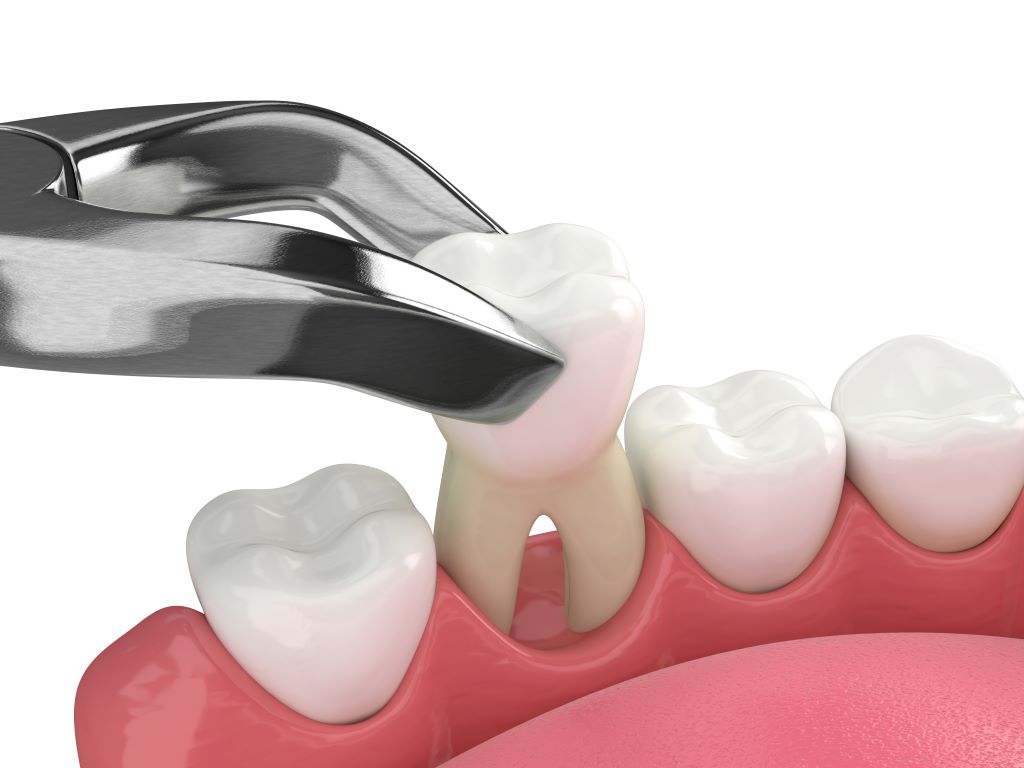
Understanding Wisdom Tooth Extraction
Wisdom teeth, also known as third molars, are the last of the permanent teeth to erupt—typically between the ages of 17 and 25. In many cases they emerge without issue; however, often there isn’t enough space in the jaw, or they grow in at awkward angles, which can lead to a range of problems. Wisdom tooth extraction is the removal of one or more of these molars to prevent or resolve such issues.
Why Extraction Might Be Necessary
There are several reasons a dentist may recommend removing wisdom teeth:
- Impaction: This occurs when a wisdom tooth is blocked by other teeth, bone, or gums so it can’t fully erupt. Impacted wisdom teeth may be partially or fully buried.
- Crowding: When the jaw doesn’t have enough room, wisdom teeth can push against adjacent teeth, risking misalignment or damage.
- Infection or Gum Disease: Partially erupted wisdom teeth can create pockets where bacteria accumulate, leading to recurring infections or gum inflammation (pericoronitis).
- Decay: Because wisdom teeth are hard to reach, they are harder to clean, making them more vulnerable to cavities.
- Cysts or Other Pathology: Occasionally, a cyst or sac may form around an impacted tooth, which can damage bone or nearby teeth if not managed.
- Orthodontic or Functional Reasons: Sometimes extraction is necessary to help with other dental treatments (e.g. braces) or to relieve pain, swelling, or jaw problems.
How the Procedure Works
At Olive Branch Dental, like many dental practices, wisdom tooth extraction is handled carefully to ensure safety, comfort, and effective healing. Here’s what to expect:
- Consultation & Examination
Your dentist examines your mouth and takes X-rays to assess how the wisdom teeth are positioned—whether they are impacted, angled, how close they are to nerves or sinuses, and how much bone covers them. - Anesthesia / Sedation Options
To ensure comfort, local anesthesia is generally used to numb the area. For more complex extractions or patient anxiety, additional sedation (such as nitrous oxide or oral sedatives) may be offered. - The Extraction
- If the tooth has erupted and is relatively accessible, it may be removed using forceps.
- If it is impacted (partially or fully under gums/bone), the dentist may cut through gum tissue, remove bone, or divide the tooth into pieces to safely extract it.
- After removal, the socket (where the tooth was) may need stitching. Dissolving sutures are often used.
- Duration
The actual extraction can take from a few minutes for simple cases, to longer if complicated by impaction or depth of the tooth. Most patients can go home the same day.
Recovery and After-Care
Healing after wisdom tooth extraction typically involves some discomfort, swelling, and care. Here’s what patients can expect and how to support good recovery:
- Pain and Swelling: Swelling usually peaks within 48-72 hours after surgery and then gradually subsides. Pain is managed with prescribed or over-the-counter medications. Cold compresses can help during early recovery.
- Diet: Soft foods are recommended for the first few days—yogurt, soups, mashed potatoes, smoothies. Avoid hard, crunchy, spicy, or hot foods initially. Drink plenty of fluids, but avoid using straws as the suction can dislodge the clot in the socket.
- Oral Hygiene: Keeping the mouth clean is crucial. Gentle brushing around extraction area, avoiding vigorous rinsing during the first 24 hours. Later, warm salt water rinses help.
- Rest and Activity: Rest is important. Physical activity should be limited in the initial days—avoiding tiring or strenuous exercise that might increase bleeding.
- Watching for Complications: Some possible complications include:
- Dry socket: When the blood clot in the socket is dislodged too early, exposing bone and nerves, causing pain.
- Infection: Signs include persistent swelling, foul taste or smell, discharge, or fever.
- Excessive bleeding or delayed healing.
- Nerve injury (rare), particularly if wisdom teeth are close to the nerve canals.
Patients should follow the dentist’s instructions closely and report any concerns.
Timing and Age Considerations
It is often easier to extract wisdom teeth earlier—late teens to early twenties—before roots fully develop and bone density increases. Younger patients typically have fewer complications and faster healing. As age increases, the procedure can become more challenging, with potentially longer healing times.
What Makes Olive Branch Dental a Trusted Choice
While every dental practice approaches wisdom tooth removal with care, Olive Branch Dental in Columbus combines experience with patient-comfort. Key qualities include:
- Personalized evaluation of each case (position of teeth, patient medical history)
- Clear communication about anesthesia & sedation options
- Emphasis on painless, safe procedures
- Guidance through the entire recovery process, including support for after-care
Conclusion
Wisdom tooth extraction is a common dental surgery. For many people, it is essential to prevent future problems like infections, damage to other teeth, cysts, or pain. If you’re experiencing discomfort, swelling, crowding, or if your dentist has spotted wisdom teeth that could pose risk, an evaluation at Olive Branch Dental can help you understand your options. Recovery takes a bit of patience, but with good care, most people heal well and return to their regular routine quickly.
